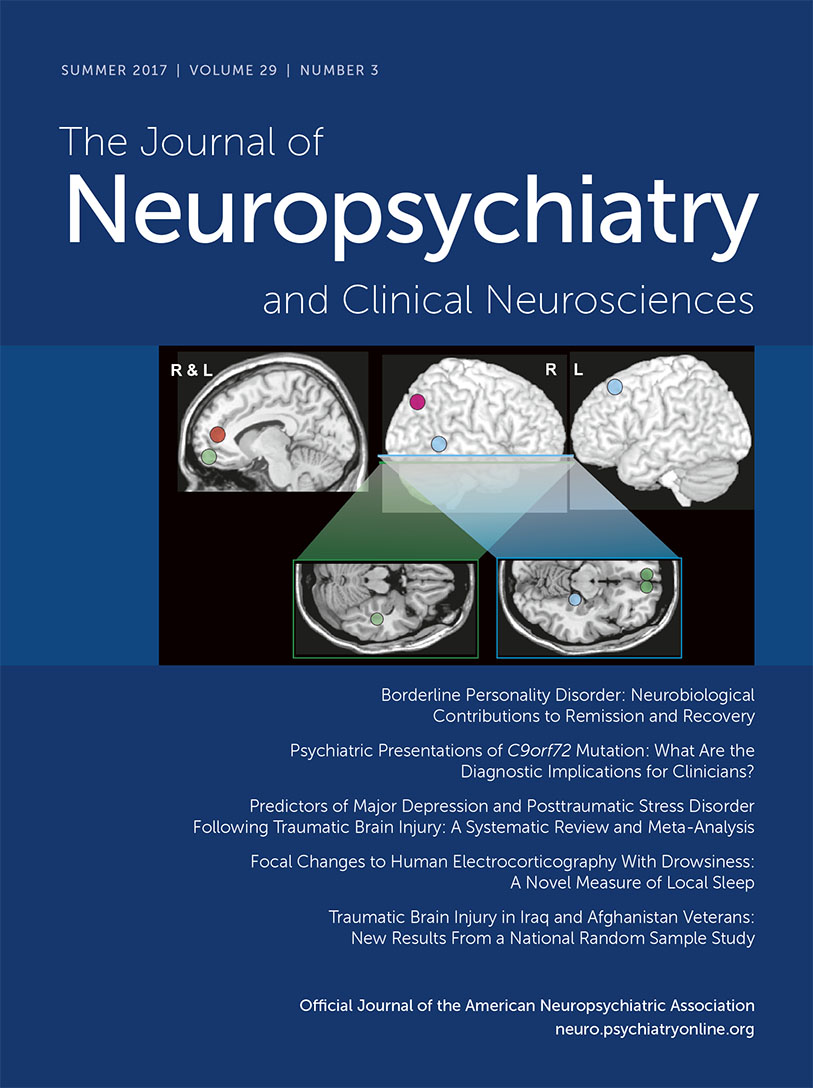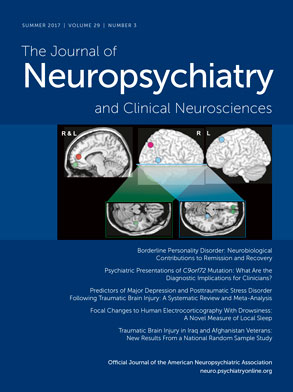Huntington’s disease (HD) is a progressive, neuropsychiatric genetic disorder that commonly presents as a clinical triad of choreic movements, cognitive decline, and psychiatric syndromes that typically manifest starting in the fourth and fifth decades of life. It is inherited through an autosomal dominant pattern and is due to an expansion of a polymorphic trinucleotide repeat in the short arm of chromosome 4.
1,2 There is neurodegeneration in the corpus striatum and atrophy of the brain.
3 Most psychiatric manifestations in HD vary and may precede motor and cognitive changes. Agitation is one of the primary reasons that patients are hospitalized or placed in nursing homes, and there are currently no guidelines on how to manage agitation effectively in HD.
4 We present the case of a 51-year-old woman with HD with agitation who attempted to elope from her long-term care facility (LTC) and was successfully managed with five electroconvulsive therapy (ECT) treatments.
Case Report
“Ms. A” is a 51-year-old woman with a 15-year-long history of HD with confirmed genetic testing demonstrating CAG repeat expansion. Family history is positive for HD, including three of her sisters. She moved to an LTC facility 7 years prior, as she was unable to care for herself. For the past 6 months, a sudden decline was noticed in her mental status. Since then, she became more agitated and noncompliant with her medications and has become urinary incontinent and has attempted to elope from her LTC. Her past medical history is significant for hypertension and hyperlipidemia. Prior to her admission, she was on buspirone (5 mg twice a day), divalproex sodium (250 mg once a day and 500 mg at night), lorazepam (0.5 mg 3 times a day), paliperidone (156 mg every 30 days), quetiapine (100 mg at night), and venlafaxine (150 mg once a day).
Upon admission to the emergency department, a head CT demonstrated mild atrophy, but no acute intracranial abnormalities. She was physically aggressive with staff in the emergency department and was given haloperidol and ziprasidone. In the inpatient unit, she had visible choreoathetoid movements in her upper extremities and repeated episodes of urinary incontinence. Upon questioning, she believed that the FBI was hurting her and that she lived in a mansion, not in the LTC. She had repeated episodes of aggression. Her agitation involved verbal outbursts of yelling out obscenities and threats, with intermittent, loud sobbing. The physical agitation involved hitting staff members, throwing objects, and punching the walls or bed rails. There were also inappropriate behaviors, including disrobing.
Quetiapine was decreased to 50 mg at night due to excess somnolence, and olanzapine (10 mg) was started. Since the agitation persisted, we initiated bitemporal ECT. The patient’s power of attorney signed consent for ECT. By the third treatment, the family and our team noticed a remarkable improvement in her behaviors and interactions consisting of less irritability, decreased verbal agitation, and no episodes of physical agitation. After the fifth ECT treatment, she was able to remain calm, tolerate conversations with other staff members, and appreciate her time with her family. The power of attorney declined further maintenance ECT treatments. The family reported that she did well for 2 months, but her agitation persisted afterward.
Discussion
Agitation is quite common in HD, with prior studies demonstrating a prevalence of 22%–66%.
4 There is limited literature available on how to manage agitation in HD. Agitation can often be quantified by using a behavior scale, such as the Cohen-Mansfield Agitation Inventory. Various antipsychotics and mood stabilizers to treat agitation in HD have been described in the literature, but there is no established standard; one study demonstrated a significant response to combined pharmacotherapy of lithium carbonate and haloperidol versus placebo.
4 However, in the studies available for psychotropic medications used to treat agitation in HD, the sample sizes have been small, as HD is relatively rare.
Nonpharmacological treatments used to treat agitation in HD are not very established. Behavioral modification and sensory modulation have been used.
4 ECT is commonly used for treatment-resistant mood disorders and psychotic disorders, and clinicians are realizing the potential for other indications. ECT has been shown to treat agitation in other conditions, such as agitation in treatment-resistant schizophrenia and major neurocognitive disorder.
5 ECT enhances dopaminergic, serotonergic, adrenergic, GABAergic, and glutaminergic neurotransmission.
6 In HD, ECT has been used to target mood symptoms and psychosis.
7 Treating agitation in HD with ECT has not been well studied. We recommend that clinicians consider using ECT in treating agitation in HD, after a failed trial of antipsychotics with mood stabilizers, and use of maintenance ECT for one month.

